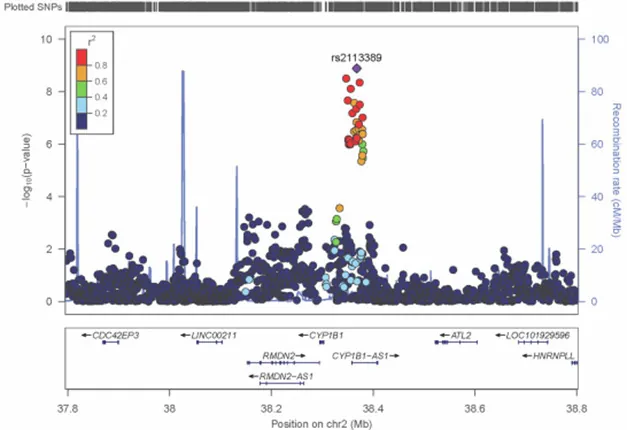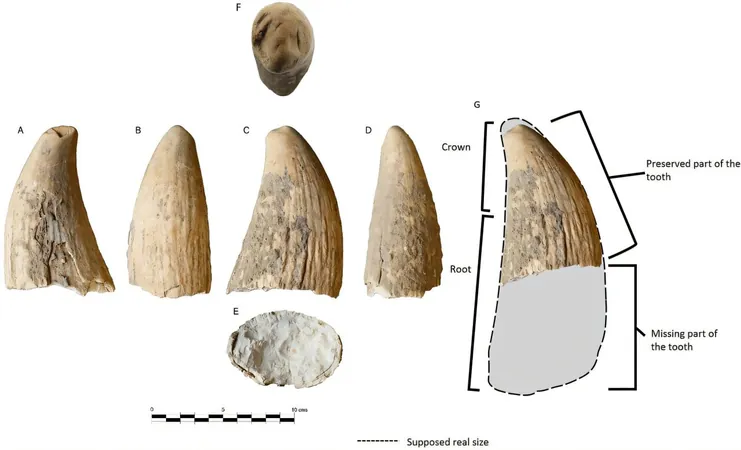
New Breakthrough in Alzheimer’s Research: Cytochrome P450 Protein Linked to Brain Tangles!
2024-09-27
Author: Siti
New Breakthrough in Alzheimer’s Research: Cytochrome P450 Protein Linked to Brain Tangles!
In a groundbreaking study published on September 20, 2024, in Nature Communications, researchers have uncovered a possible new gene associated with Alzheimer’s disease (AD), specifically linking it to the formation of tau tangles in the brain. The study, spearheaded by Andrew Saykin at Indiana University School of Medicine, reveals that a risk variant of the CYP1B1 gene, a member of the cytochrome P450 family of enzymes, correlates with increased tau pathology among patients.
Utilizing the innovative endophenotype approach—a method that employs measurable disease characteristics rather than just clinical diagnoses—scientists analyzed over 3,000 tau PET scans. This method significantly amplified the statistical power of their findings, allowing them to identify genetic variations that had eluded discovery in conventional genome-wide association studies (GWAS).
Previous research has linked tau PET scans with established Alzheimer’s genes, including BIN1, and revealed genetic connections to tau phosphorylation processes. However, those earlier studies were limited in scope, often including only a few hundred participants. This new study, however, involved a meta-analysis of 1,446 tau PET scans across multiple Alzheimer’s and aging cohorts, including prominent studies like ADNI, ADNI-Department of Defense, and the A4 Study.
The results pinpointed a significant genomic location between the CYP1B1 and RMDN2 genes, with a specific single nucleotide polymorphism (SNP) identified as rs2113389 showing a strong association with increased tau tangles in the brain regions associated with memory and cognition, including the temporal, parietal, and frontal lobes. Remarkably, the rs2113389 SNP accounted for 4.3% of the variance in tangle load, surpassing the effect size of the well-known APOE4 gene, which had a contribution of 3.6%.
Additionally, this risk SNP was found to correlate with elevated levels of total tau and phospho-tau in cerebrospinal fluid, and its effects appeared to be independent of amyloid plaques and the APOE genotype, indicating that it could be a significant player in Alzheimer’s pathology.
What makes this discovery even more intriguing is the function of the CYP1B1 gene itself. It is involved in metabolizing various substances, including drugs and hormones, but it can also induce oxidative stress—a known contributor to tau phosphorylation and misfolding. This could provide a potential explanation for how increased CYP1B1 might exacerbate the development of tau tangles.
While the study lays the groundwork for further exploration into the role of CYP1B1 in Alzheimer’s disease, researchers caution that the predominately European ancestry of the cohorts involved may limit the generalizability of the findings. They emphasize the need for larger, more diverse studies in order to validate and expand upon these promising results.
As the global search for effective Alzheimer's treatments continues, these findings offer hope that understanding the genetic underpinnings of the disease could lead to more targeted interventions in the future. With ongoing research, the scientific community remains optimistic about the potential for breakthroughs in the fight against this devastating condition. Stay tuned as more developments unfold in the quest to unlock the secrets of Alzheimer’s disease!




 Brasil (PT)
Brasil (PT)
 Canada (EN)
Canada (EN)
 Chile (ES)
Chile (ES)
 Česko (CS)
Česko (CS)
 대한민국 (KO)
대한민국 (KO)
 España (ES)
España (ES)
 France (FR)
France (FR)
 Hong Kong (EN)
Hong Kong (EN)
 Italia (IT)
Italia (IT)
 日本 (JA)
日本 (JA)
 Magyarország (HU)
Magyarország (HU)
 Norge (NO)
Norge (NO)
 Polska (PL)
Polska (PL)
 Schweiz (DE)
Schweiz (DE)
 Singapore (EN)
Singapore (EN)
 Sverige (SV)
Sverige (SV)
 Suomi (FI)
Suomi (FI)
 Türkiye (TR)
Türkiye (TR)
 الإمارات العربية المتحدة (AR)
الإمارات العربية المتحدة (AR)